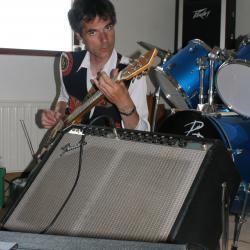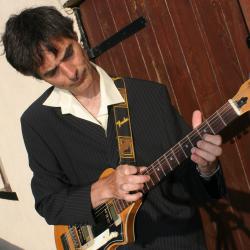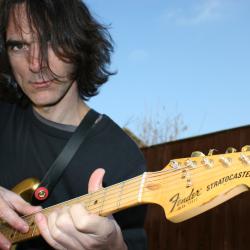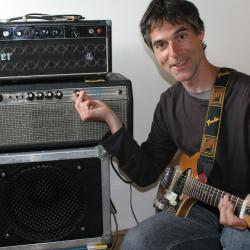 Once you get to grips with playing your chords fluently you may want to progress to make these chords progressions stand out. Playing chord progressions on their own is fine, but it helps if you can sings along with whatever you playing. The singing will help the listener that they are hearing a tune instead of listening to a harmonic back drop of chords.
Once you get to grips with playing your chords fluently you may want to progress to make these chords progressions stand out. Playing chord progressions on their own is fine, but it helps if you can sings along with whatever you playing. The singing will help the listener that they are hearing a tune instead of listening to a harmonic back drop of chords.
If you do not want to sing there are several things you can do to make your chords stand out and give them the idea that there is a song in there. Playing bass notes along with your chords is one of those things you can do. For this blog I want to give you a few examples of what you can do to guide those chords along with some bass notes.
The first example here is a C chord with a handful of bass notes. The first bass notes is the fifth of the C chord. Check for the timing and feel which is indicated by the counting underneath the progression.
C C
E ———————————-
B ——–5——————5—–
G ——–5——————5—- repeat the same bar over and over again
D ——–5——————5— try to play as smoothly as you can.
A ——————-2–3——– Observe that the C chord is played by using the “A” shape.
E –3———-5—————–
1 2 3 and 4 and
Here is the same chord now played using a partial “E” shape higher on the fretboard. The bass notes which guide the chord along give you a similar idea as the first example.
C C
E —————————————————–
B ——————————————————
G ———–9————————9————— Again, try playing this several times
D ———–10———————–10————–
A —————————7–8———————-
E —8———–10————————————
1 2 3 and 4 and
Here a progression which uses four chords within two bars. The first bar is repeated twice before it progresses and finishes with the next bar:
Am G x2 F G
E ——–5————————— ——————————————
B ——-5——————-3——- ——–1———————-3———
G ——–5——————-4—— ——–2———————-4———
D —————————–5—– ——–3———————-5———-
A ————————————- ——————————————-
E –5———7——-3————-7– —-1———5—–3—————-7—-
1 2 and 3 4 and 1 2 and 3 4 and
Notice the Am chord uses the “Em” shape while both the G and F chord use the “F” shape.
Try using some of these ideas with your own chord progressions. Find bass notes which are not too far away from the chords to achieve a smooth sound.
Enjoy and hope to catch you soon again,
Eddie








